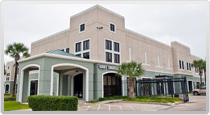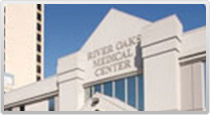June 12, 2014- Northstar HealthCare Surgery Center of Dallas launched a minimally invasive bariatric program in September, 2013 and already is one of the few facilities in the nation that is successfully performing same day gastric sleeves. To date (June 1st, 2014), we have performed 367 gastric sleeves, 90% which have been discharged the same day. This success has been a multidiscipline team approach between the surgeon, the anesthesia department, the OR staff, post-op staff, and clinical staff on the units which focuses on the patient while providing quality care with excellent outcomes. The patients going home the same day has a positive financial impact as well with increased patient satisfaction.
Obesity has direct causal effect associated co-morbidities. The number of obese adults was estimated to be 500 million in 2012 and with projections increasing that number to over 700 million by the year 2015 (1). The Centers for Disease Control (CDC) and Prevention estimate that 34% of U. S. adults over the age of 20 are obese with another 33% being overweight. Today, obesity is second only to tobacco use as a modifiable risk factor in adult mortality; one of the factors contributing to the continued utilization of bariatric surgeries. Insurance companies are beginning to understand that by assisting patients in paying for bariatric surgery, they can actually reduce their long-term costs because of the improvement in comorbid conditions as a result of the weight loss.
Although there are several surgical weight loss options, the gastric bypass has historically been the most frequent bariatric surgery in the U.S. However, the gastric sleeve surgery is rapidly increasing in popularity in the United States and became the number one procedure in 2013. (2) In 2012, Bariatric News reported that gastric sleeves rose from 0.9% to 36.3% of the approximate 200,000 bariatric surgeries performed in the US. The most recent figures from ASMBS reported that it is now 42.1% of the bariatric procedures performed in the US. In addition, there are fewer long-term complications with the gastric sleeve (especially when performed laparoscopically) when compared to the gastric bypass or the gastric banding procedures. The gastric sleeve is technically an easier operation to perform than the gastric bypass surgery so again less anesthesia time. Initially, the gastric sleeve had been performed as part of a staged bariatric surgery but in October of 2011 the American Society for Metabolic and Bariatric Surgery (ASMBS) recognized the sleeve gastrectomy as a primary bariatric procedure.
At NorthStar HealthCare Surgery Center of Dallas, there are many reasons the center has been able to expedite post-operative care. It begins with our patient selection criteria. Criteria include stable patients aged from 14 to 65 years. Although many of our patients do have co- morbidities such as diabetes and sleep apnea, those diseases are well controlled prior to surgery. Also, since nausea is the most frequent complication after the gastric sleeve, the surgeons collectively agreed to order antiemetic medication before the patients arrive to the Center. The most common medications are a scopolamine patch applied the night before the surgery paired with either Emend or Zofran taken the morning of surgery. Preoperative education is began in the surgeon’s office and continued by the Center’s nurse practitioner both preoperative and post-operative. This education helps to motivate the patient and to reduce anxiety because they know what to expect.
All of the Center’s surgeons are very skilled and all have at least 3 years of bariatric experience enabling them to complete the laparoscopic sleeve gastrectomy surgery averaging less than an hour. At the end of the procedure patients are injected with bupivacaine liposome which has 4 significantly decreased post-operative pain allowing the patient to move more frequently and easier. This protocol along with the shortened anesthesia time contributes to a faster recovery with fewer complications. Anesthesia’s plan is designed to facilitate rapid intubation and airway control with Extubation before the patient leaves the OR. Then multiple approaches are used for pain and nausea control as stated below.
The patients are started on clear liquids, incentive spirometry, sequential compression devices and active movement within the recovery room. Patients are observed about 2 hours in recovery before they are walked back to their rooms. On the unit, they are encouraged to ambulate frequently and to sit upright as much as possible with their sequential compression devices which are applied in the recovery room. Patients with sleep apnea and required to bring their CPAP or BIPAP machines with them and they are utilized post operatively. Other patients received supplemental nasal oxygen until they can maintain their oxygen levels above 90%. Nausea is treated aggressively by the nurse practitioner or physicians. Intra-operatively, a small dose of IV steroid is administered. Post-operatively a combination of Reglan, Zofran, Phenergan and Toradol is usually utilized. Post-operative teaching is initiated before the patient arrives and reinforced many times while in the Center by the nurses and the bariatric nurse practitioner. Patients are required to stay for approximately 4 hours after the surgery and most are discharged within 12 hours. They must be able to drink 250cc of fluids before discharge and they are well hydrated with IV fluids receiving an average of 3-4 liters of fluids. In addition, a low molecular weight heparin (Lovenox 30mg) and an IV dose of Protonix is administered before discharge. The IV Protonix and the patient being well hydrated has contributed to less nausea as well. There is limited use of abdominal drains and leak testing if done is performed intraoperative. Criteria for discharge includes able to drink at least 250cc offluids, be able to ambulate, be on room air oxygen, pulse below 100 or at baseline, blood pressure stable and be able to void. There has been some issues with 5 patients being not being able to void but Urecholine 25mg-50mg was utilized successfully in those patients. All patients receive a post-operative phone call within 5 days and the response has been 99% positive regarding their experience in the Center. Only 3 patients were transferred to a hospital because of persistent nausea and 3 returned to the Center for IV fluids and medication due to dehydration. One patient was admitted to a hospital 3 days post-surgery due to aspiration pneumonia. All of these patients have done well long-term.
Outpatient gastric sleeve surgery can be performed safely and efficiently with the multi- discipline teamwork approach. The optimal is to have stable and experienced professional staff caring for the patient undergoing bariatric surgery. Northstar Surgery Center of Dallas works in synchronicity to provide excellent care for the bariatric patient and have seen a reduction in bariatric costs with excellent outcomes.
1) National Center for Health Statistics. NHANES response rates and CPS totals: 2011–
2012. 2013.
2) American Society for Metabolic and Bariatric Surgery, Connect, May, 2014
By: Sandy McCoy, RN, MSN, CBN, FNP-BC, Nick Nicholson, MD, Chad Carlton, MD, Nirmal Jayaseelan, MD, Clayton Frenzel, DO, Justin Reed, MD
June 12, 2014
Northstar Surgery Center
5920 Forest Park, Suite 700
Dallas, Texas 75235
Cell-214-725-0716
Fax-214-352-4862









No comments in this article
There are no comments yet.